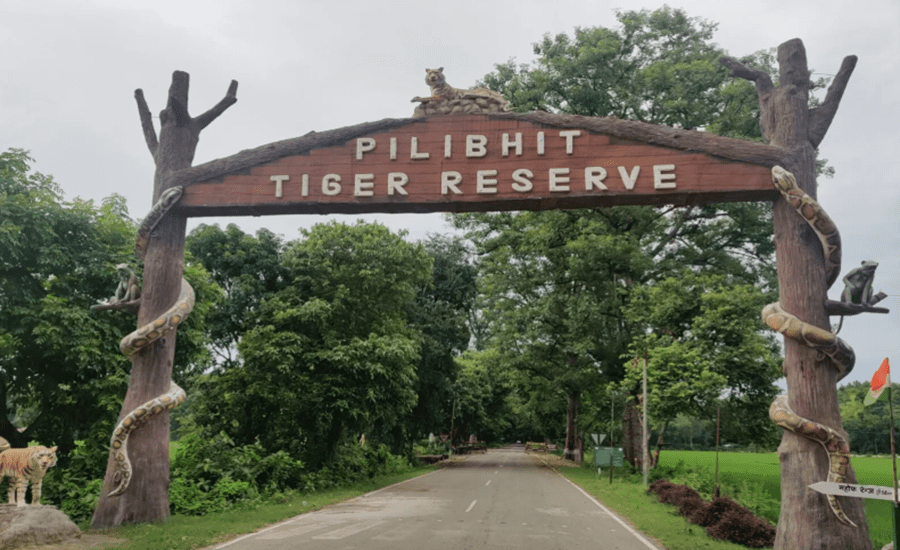Lucknow: The Eco Development Committees (EDCs) operating around the Pilibhit Tiger Reserve are emerging as powerful instruments for boosting eco-tourism and improving the socio-economic conditions of local communities. Spearheaded by the Forest and Wildlife Department and supported financially by the Tiger Reserve Foundation, these committees are actively engaging local youth, building infrastructure, and contributing to environmental awareness and conservation.
Also Read: Protect Tigers vs Protect Humans: Pilibhit Tiger Reserve Walks on Tightrope
Currently, eight EDCs are operational in villages such as Chuka (Selha), Barahi, and Chauka Kheda, located in the buffer zones of the Tiger Reserve. These committees are not only promoting eco-tourism through activities like tourist guiding, canteen management, and awareness drives but are also working diligently on development initiatives that uplift the standard of living for nearby villagers.
Each EDC receives an annual financial assistance of Rs. 1 lakh from the Tiger Reserve Foundation. With this support, the committees have managed to generate an annual income of Rs. 6–10 lakh per unit, which is reinvested into the local economy through the creation of basic amenities and community services. Key projects include the construction of village roads and pavements, installation of solar lighting systems, and building of water reservoirs. These improvements have had a measurable impact on local infrastructure and quality of life.
Pivotal Role played by the EDCs
Additionally, the EDCs have played a vital role in capacity building by providing training to local youth in hospitality, nature guiding, and tourism-related services, thus equipping them with employable skills. As a result, many young individuals have found sustainable livelihoods within their native villages, aligning with Chief Minister Yogi Adityanath’s vision of self-reliance and rural empowerment.
Officials from the Forest and Wildlife Department emphasized that the EDCs are demonstrating a successful model of inclusive development by ensuring the active participation of the local community in conservation-linked tourism. “This is not just about protecting the forest and wildlife, but also about protecting and nurturing the communities that live around them,” a senior forest officer said.
Environmental awareness is also a key focus for the committees, which conduct regular educational programs for both residents and tourists on conservation practices, wildlife protection, and the importance of maintaining ecological balance.
Pioneering Model for Other Tiger Reserves Across India
The success of the EDCs in Pilibhit has sparked discussions around replicating this model near other Tiger Reserves and protected forests across Uttar Pradesh. Officials believe that expanding such community-driven initiatives will pave the way for more widespread employment opportunities and holistic development in rural and forest-adjacent areas.
As Pilibhit Tiger Reserve continues to set benchmarks in integrating conservation with community development, it stands as a testament to how targeted, grassroots initiatives can deliver long-lasting impact for people and the planet.
Pilibhit Tiger Reserve
Pilibhit Tiger Reserve, located in Uttar Pradesh, is one of India’s prominent protected areas known for its rich biodiversity and significant population of Bengal tigers. Spread across the districts of Pilibhit, Lakhimpur Kheri, and Bahraich, it comprises dense sal forests, grasslands, and water bodies, supporting a thriving ecosystem.



























